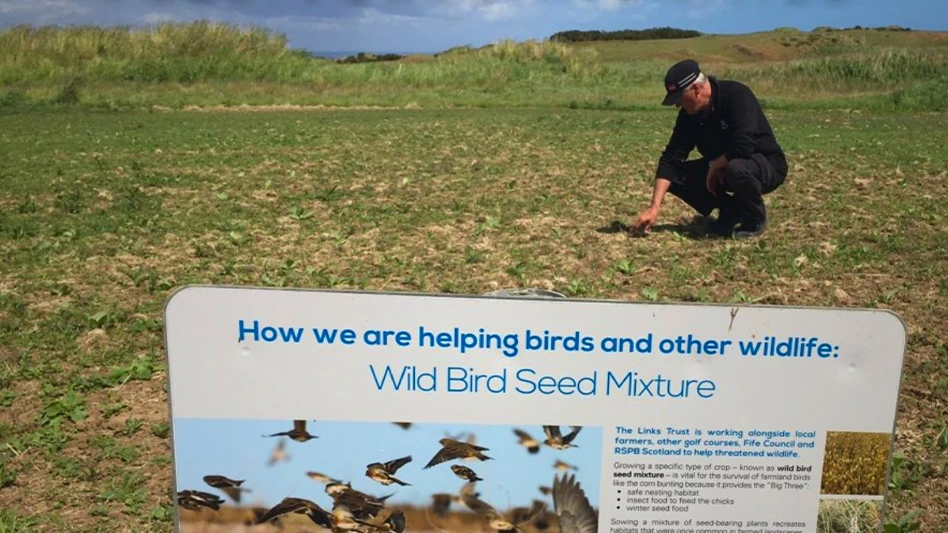Click Image to Zoom
Sometimes you visit a place where the cell phone signal craps out and you’re left to do something crazy like park the car and enter a ranch-style museum to find directions to a golf course with no website or phone number.
Trona, Calif., qualifies as one of those places.
Never heard of Trona? You’re in the majority.
Trona is a borax mining community about 30 miles southwest of Death Valley National Park. It surrounds a dry lake and boasts a restaurant, Family Dollar, post office, gas station, rail line and a high school that graduated 13 students last year yet still managed to field an eight-man football varsity team. The Trona Tornadoes compete on an all-dirt field.
Looking to squeeze in an outdoor experience during a niece and nephew’s early afternoon naps, I left Ridgecrest, a High Desert community with a naval weapons station, and traveled along California State Route 178 toward Trona. A rigorous hike was the initial afternoon objective. But I remembered my brother-in-law telling me Trona might have a golf course. I threw the clubs in my sister’s car just in case the itch hit during the 30-mile drive. As usual, it hit.
With no cell phone signal or idea of where I was going, I parked beside the Searles Valley Historical Society museum, studied the building and did something unusual: opened the door and asked actual people for directions. I was politely greeted by four women.
“Yes, there’s a golf course here. It’s past the high school three miles up the road” one said. “But you need $5 to play it.”
I toured the nine-room museum, bought a sandstone coaster with a road sign reading “End of the World, 10 miles; Trona, 15 miles,” thanked the ladies, two of whom were Midwest natives, and accelerated until seeing a faded sign for Trona Golf Course. A chain-linked fence with barbed wire across the top established a barrier between the course and parking lot. The doorknob on the front entrance was unlocked, and I gladly deposited $5 into a locked honor’s box. It then took five minutes to find the first tee. Scorecards inside a mailbox beside the tee answered basic questions: Trona GC has 18 holes, plays to a par 72, and measures 6,217 yards from the back and 5,115 yards from the front tees.
The view from the first tee signified a golf experience as rugged – and unique – as the surrounding landscape. Teeing grounds are faded, synthetic mats. Fairways are a collection of rocks, dirt, sand, wildflowers, weeds and native plants. Spotting a green measuring no more than 10 yards by 10 yards when standing 349 yards away isn’t easy and hitting driver isn’t smart when a hole’s routing is a bigger mystery than why 35-year-old men in Southern California brag about scoring tickets to a Justin Bieber concert.
A few notable sights rested to the left of the first tee, including maintenance equipment and a wire box with a Rain Bird logo. The equipment, which included a large tiller, tractor and push mower, looked museum-ready. The Rain Bird logo suggested some form of irrigation, something confirmed when I approached the first green and saw a mixture of grasses on the surface and a black hose off the side.
One hole down. So many questions to go. At this point, I was ready to end my vacation and start investigating. Yet I encountered a problem. I didn’t see or hear one person in two hours on the grounds. I still can’t find a phone number for the course.
California ranks second behind Florida in the U.S. with 902 golf facilities, according to the National Golf Foundation. It’s a safe bet none of the other 901 facilities are like Trona GC. Tom Doak, Gil Hanse, and Bill Coore and Ben Crenshaw’s “natural” creations are suburban compared to this place. Straight tee shots ricocheting off rocks, the threat of iron faces and shafts snapping on approach shots, putts rolling in myriad of directions, colorful weeds on collars and the “Caution Rattlesnakes” warning at the entrance are welcomed anomalies.
The ninth hole, which features an intimidating tee shot requiring a diagonal line to a narrow landing area, out of bounds on the left, a sandy depression filled with shrubs on the right, trees behind the green and mountain views, is the San Bernardino County version of The Road Hole. You exit the green and never forget what you experienced.
The back nine offered temptation, but family hours are commodities, especially when family lives 2,300 miles from your home. Golf courses like Trona GC are also commodities that provide recreational opportunities in unlikely places. The dry erase board on the clubhouse advertised a scramble with a potluck held in early March and urged customers to “Please, Please, Please” don’t hit balls from the putting green.
Even people responsible for maintaining golf courses in remote places – whomever they might be in this case – must deal with knuckleheads.

Explore the April 2016 Issue
Check out more from this issue and find your next story to read.
Latest from Golf Course Industry
- The Aquatrols Company adds former superintendent to its R&D team
- Heritage Golf Group expands into Tennessee
- Making the grade — at or near grade
- PBI-Gordon receives local business honor
- Florida's Windsor takes environmental step
- GCSAA names Grassroots Ambassador Leadership Award winners
- Turf & Soil Diagnostics promotes Duane Otto to president
- Reel Turf Techs: Ben Herberger







































